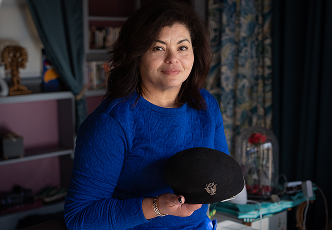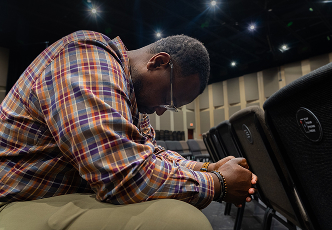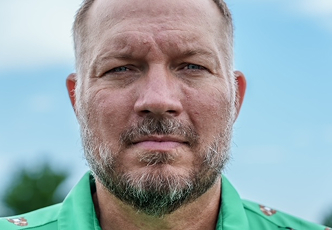Race, Culture, and PTSD
Many of the characteristics that make us who we are — like race, ethnicity, and cultural values and beliefs — can also shape how we experience and respond to trauma. That means Veterans may experience PTSD differently depending on their personal characteristics.
Racism and discrimination
While serving in the military, some Veterans experience racism and discrimination. A few examples include:
- Hurtful comments related to your race or ethnicity, culture, or religion
- Unfair treatment because of your race or ethnicity, culture, or religion (e.g., being passed over for a promotion, assigned less desirable duties, or mistreated by a supervisor or commanding officer
- Violent acts motivated by racism (like anti-Black or anti-Asian violence) or religious or cultural discrimination (like Islamophobia or antisemitism)
If I say that I got shot to someone who doesn’t know I’m in the military, their mind automatically goes to, ‘He must have got shot in the streets,’ being the average stereotypical answer. Until I tell them, ‘Oh, I’m a Veteran as well. I’m a Purple Heart Veteran.’ That’s when people want to give me their respect.”
David Kendrick (US Army, 2005-2010) shares how racist assumptions affected him when he returned home from serving in Iraq.
I am of Hispanic descent. I am Puerto Rican. I am Spaniard, French, Taino Indian, and African. Sometimes I have to be told, ‘Use your inside voice,’ because my tonality or the way I speak is just culturally who I am. And I've always had this awareness, because [we're taught] that in certain situations, you have to conduct yourself in this manner to survive."
Marlene Diaz (US Navy, 1981-1996) explains how she adjusts her tone to survive in a society that often discriminates against people of Hispanic descent.
Racism and inequality play a role in civilian life, too. For example, Veterans of color may experience barriers to accessing health care. In addition to first-hand experiences, many witness racism or see race-based violence in the media. And cultural identities may overlap on multiple levels. A Veteran may experience discrimination related to their race along with discrimination related to other personal characteristics, such as gender, religion, class, or sexual orientation.
In addition, traumatic events that parents, grandparents, and ancestors experienced in the past can affect Veterans’ mental health in the present. This is called intergenerational trauma.
I definitely acknowledge the generational trauma that is in my life and that affects me deeply today. And when I talk of generational trauma, I'm speaking of the historical trauma that has followed from generation to generation to generation to generation from slavery.”
Yvonne Grissett (US Army, 1982-1986) shares how intergenerational trauma has affected her life.
Racism and discrimination can have a harmful effect on mental health. As a result, many Veterans of color experience racial stress: the emotional impact of stress related to racism and discrimination. Some may experience race-based trauma: traumatic events that are directly related to race, like racially motivated violence.
Racial stress and race-based trauma can contribute to symptoms associated with PTSD, such as intrusive memories, avoidance, negative thoughts, and feeling like you’re always on guard or overstimulated. They can also cause other health concerns like anxiety, depression, and high blood pressure.
Barriers to asking for help
Many Veterans face barriers that can make it harder to seek treatment for PTSD. Sometimes these barriers may overlap with cultural beliefs or past experiences of racism and discrimination.
Mental health stigma
Some Veterans grow up in families and communities where stigma prevents people from talking openly about mental health. Family and friends may avoid conversations about mental health concerns or imply that those who experience mental illness are “crazy.”
Growing up, there was a big stigma about mental health in our community. Not too many people even knew what mental health was. It was just, ‘Oh, he crazy.’ It was easier to drink or smoke with somebody as a way to cope.”
David Kendrick (US Army, 2005-2010) shares that his family didn’t talk about mental health when he was a kid.
As an Indigenous person, I grew up in a family with military brothers that never talked about their service time. Same thing with people in my family that were residential school survivors — they didn't talk about those things.”
Suzanne Allen (US Airforce, 1990-1993, 1996-2013) explains that her family members didn’t share painful experiences from the past.
Within the Asian culture, it's always about saving face, you know? I noticed that I was hurting the people that I love by the lies I was telling them. I was pushing them away...because within the Asian culture, mental health is not really spoken about.”
Michael Nguyen (US Navy, 1991-1993) describes how stigma made it harder for him to share what he was going through with family and friends.
Religious faith
Some Veterans grow up in communities where people turn to their faith for relief from mental health concerns. Sometimes family and friends may discourage Veterans from seeking help outside of their community or religious organization.
Within the Black community, my experience is, we don’t take the necessary steps to deal with mental illness. We’ll say ‘I’m taking Bobby to church. The pastor got some oil, he going to anoint him…’ But what [Bobby’s] dealing with is deeper than just somebody praying for him. But the stigma with mental illness in the Black community is thick.”
Jeff Jones (US Army, 1989-1994) explains how religious beliefs and mental health stigma can be connected.
Building trust
Veterans may struggle with trusting a treatment provider who doesn’t share their race, ethnicity, or cultural background, especially if they’ve experienced racism or discrimination in the past.
When I first began the process of therapy, it was kind of difficult for me to be open because my psychologist is a white female. For her to understand me as an Indigenous person, I didn’t think she would really understand that.”
Suzanne Allen (US Airforce, 1990-1993, 1996-2013) explains why it was difficult for her to open up when she first started therapy.
How to get help
Together with evidence-based PTSD treatment, religious or spiritual practices and community support can help Veterans manage PTSD symptoms. Here’s how to make the most of the resources available to you.
Find a treatment provider who’s a good fit for you
You deserve support from a PTSD treatment provider who knows where you’re coming from and has the tools to address your needs. Here are some tips to help you find the best possible match:
- If you would feel more comfortable with a provider of the same race, religion, or cultural background, share your preference with VA.
- When you start seeing a new provider, ask about their experience treating Veterans of color or Veterans with similar religious or cultural backgrounds.
- Don’t hesitate to bring up issues related to race with your provider. Remember, your conversations with your provider are confidential.
- If it turns out your provider doesn’t have the experience to meet your needs, or you don’t feel it’s a supportive match, you can ask to switch to someone else.
At the same time, keep in mind that VA is taking steps to make sure that all treatment providers are educated about how race and culture may shape Veterans’ experiences with PTSD.
It’s not what color that doctor is. It’s do you think they have your best interests at heart? Can you trust them? Can you give them all that stuff you’ve been holding on? Can you just crack Pandora’s box and let them look in with you? Trust that they will keep you safe while the box is open and share that stuff with somebody.”
Yvonne Grissett (US Army, 1982-1986) encourages Veterans to keep an open mind about working with providers of a different race or ethnicity.
Combine cultural beliefs and practices with PTSD treatment
For some Veterans, combining cultural beliefs and practices with evidence-based PTSD treatment is key to healing.
My Buddhist practice helps me ground and helps me have that space to do that meditation. The evidence-based therapy helps you with other keys that might help unlock feelings, emotions, or processing. So I think both of those go hand in hand.”
Michael Nguyen (US Navy, 1991-1993) shares how his Buddhist practice and therapy have helped him cope with PTSD.
You have to use all the resources you can. For me, it was relying on some of the Indigenous beliefs I grew up with, beliefs from my grandmother, seeing a medicine man when I needed to see a medicine man, and then also relying on the VA for my actual counseling and therapy and going through that process.”
Suzanne Allen (US Airforce, 1990-1993, 1996-2013) explains how she draws on her Indigenous beliefs as well as therapy to manage PTSD symptoms.
Connect with other Veterans
Veterans often benefit from connecting with others who share similar experiences. Some VA locations offer peer support groups for Veterans with PTSD. Some also have race-based trauma support groups for Veterans of color. Learn more about peer support services at VA and ask your local VA what’s available in your area.
VA is working to provide support and resources for Veterans of color. Remember, it’s okay to advocate for yourself and ask for what you need. For example, if there isn’t a race-based trauma support group near you, you could ask your treatment provider to help start a new group.
You can also find support through Veterans Service Organizations (organizations that aren’t part of VA). There are some organizations designed to meet the needs of Veterans of color, like the National Association of Minority Veterans of America (NAMVETS). And you can ask your local VA about Veterans Service Organizations in your community.
Hear Veterans’ stories
Learn how race, ethnicity, and culture have shaped these Veterans' experiences with PTSD and PTSD treatment.
When you’re Black, you can just feel these things
David Kendrick
US Army 2005-2010
It was almost like I was less than
Marlene Diaz
US Navy 1991-1995
My Buddhist practice helps ground me
Michael Nguyen
US Navy 1991-1993
Talk to the people you trust
Suzanne Allen
US Air Force 1990-1993, 1996-2013
Again, the color of my skin was an issue
Jeff Jones
US Army 1989-1994

Want to learn more?
Check out these videos featuring Veterans who have experienced racism and discrimination in addition to PTSD.
Ready to take the next step?
Learn more about PTSD treatment
Find out what PTSD treatment is like and learn about different types of treatment.
Take the next step toward treatment
Take our PTSD self-screen, then connect with a mental health provider to find out if treatment is right for you.


